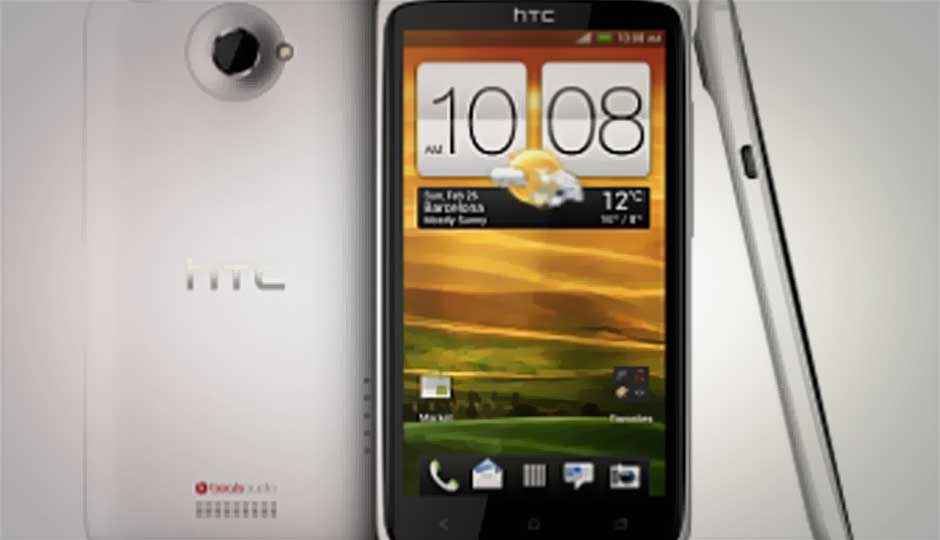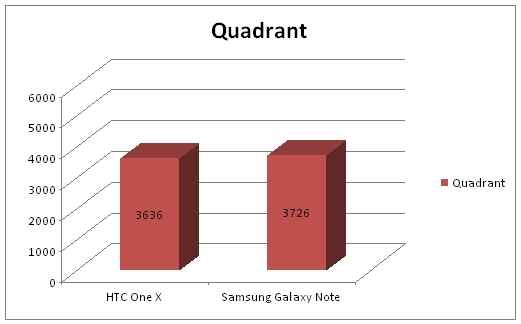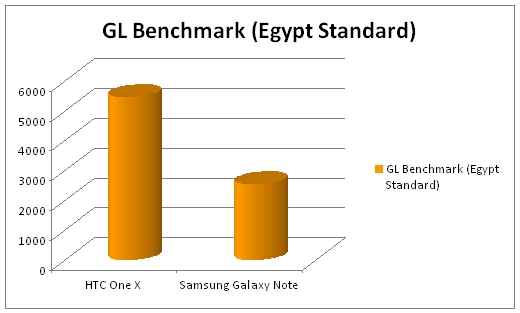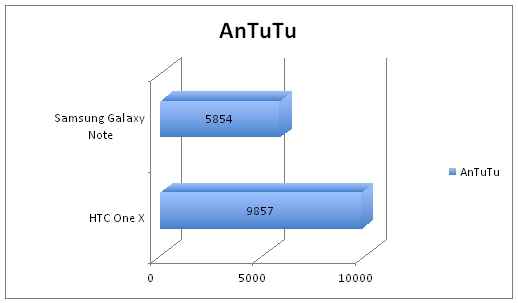HTC One X: Performance benchmarks and first impressions

The first quad core Android phone landed on my desk today, and the first reaction to unleash all the excitement was to run a set of benchmarks on it.
 Survey
SurveyHTC has pegged the MRP of the HTC One X at Rs 42,999 and a Best Buy price at Rs 37,899.
A quad-core 1.5GHz processor (Tegra 3 chipset, read more about it here) is powering the Android 4.0.3 device. Inevitably, we have compared it to the Samsung Galaxy Note (read our review here), which was the fastest Android phone we have tested till now.
Surprisingly, the One X doesn’t have too much of an advantage over the Samsung Galaxy Note, and even comes up with a lower score in some cases. However, the GL Benchmark score clearly shows how far ahead Tegra 3’s graphics are to the previous gen solutions.
 |
 |
 |
 |
Here are a few initial observations of the One X.
- Though it has a big-by-standard-definition 4.7-inch display, it doesn’t feel very big. It can be comfortably used by one hand, including typing an SMS.
- The Super IPS LCD2 display has a resolution of 1280 x 720 pixels. Brightness levels are impressive, and so is the sharpness of the text, particularly helpful when using the web browser. However, the AMOLED family of displays has the colour vividness advantage. The viewing angles are quite good, since the display is slightly less reflective than the likes of the Galaxy Note or the Motorola Razr.
- Build quality has a premium feel to it, even though it is mostly plastic throughout. The enamel white finish will get dirty very quickly if you aren’t careful, but looks brilliant.
- The user doesn’t have access to the battery pack, which is becoming a trend with phones recently.
- The One X uses a micro SIM card, and the method of slotting it in and removing it is exactly like you would do on an iOS device.
- While app load times are quicker, the phone under most usage scenarios doesn’t show its quad core power.
- Surprisingly, HTC Sense crashed a couple of times, when we were exiting random apps. The screenshots you see here with “Loading” on them are proof that HTC Sense had to recover when we returned to the home screen. The timestamps will give a clear indication that it happened multiple times.
- When configuring the phone for the first time, you are asked to sign-up/ login to Dropbox and promised 23GB extra storage for your account. We signed up with a new account, as well as re-did the process by signing in with an existing account. However, we did not get the extra space as promised till the time of writing this.
- The phone tends to become quite warm when playing a game, browsing a web or even when we were stressing it during the benchmarks. This is mostly on the lower half of the rear panel, close to the Beats Audio logo.
- There is 32GB internal storage, but no slot for memory expansion.
Do stay tuned for a detailed review very soon. In the meantime, you can check out some pictures of the UI, settings, benchmarks and video playback. Other quad-core phones expected to launch in India soon are the LG Optimus 4X HD, and the Huawei Ascend D Quad.
.jpg) |
.jpg) |
.jpg) |
.jpg) |
.jpg) |
.jpg) |
.jpg) |
.jpg) |
.jpg) |
.jpg) |
.jpg) |
.jpg) |
.jpg) |
.jpg) |
.jpg) |
|